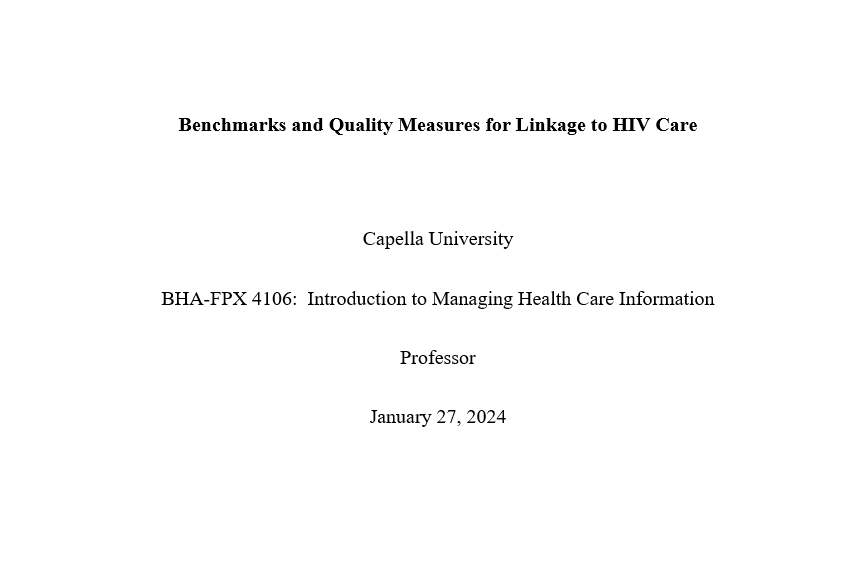Student’s Name
Capella University
NHS-FPX4000: Developing a Health Care Perspective
October 22, 2023
Applying Ethical Principles
Ethical dilemmas challenge healthcare professionals to make rational decisions that match patients’ needs and expectations. The Missing Needle Protector is an excellent example of scenarios that require physician and non-physician staff to apply moral awareness, judgment, and ethical behaviors (Capella University, n.d). Notably, leaving objects in a patient’s body raises questions about the care team’s commitment to safeguarding safety and quality of care. This paper discusses applications of ethical principles and communication approaches adopted to address the dilemma.
Background of the Missing Needle Protector Situation
The Missing Needle Protector scenario provides insights into ethical challenges in a complex care environment. The operating team left a plastic needle protector in Mrs. Jameson’s belly, exposing her to the risk of adverse health outcomes. The operating room supervisor and nurse claimed that it was difficult for the team to notice the missing object due to its red-pink color (Capella University, n.d). The director of clinical services expressed concerns about the implications of leaving the needle protector in the patient’s belly. The care team already discharged Mrs. Jameson, making it challenging to convince her to return to the operating room. The scenario reveals the need for healthcare professionals to adhere to practice standards, including the need to provide safe services that meet beneficence and non-maleficence principles. Similarly, healthcare leaders should make informed decisions such as preventing staff experiencing physical and psychological problems from handling surgical procedures and other sensitive roles.
Communication Approaches Used in the Case
The Missing Needle Protector reminds healthcare professionals about the impact of effective communication on clinical outcomes. Effective communication allows leaders to clarify practices adopted to achieve the desired quality and safety of patient care (Alnaser, 2020). The director of clinical services responded well to the incident. Firstly, it was crucial to engage parties such as the operating room supervisor and nurse directly involved in handling the patient. Straight demonstrated active listening, collaboration, and emotional regulation despite the carelessness associated with the surgical error. The response enabled the supervisor and nurse to explain the events that led to the team leaving an object in a patient’s belly.
Secondly, Straight gathered accurate and adequate information about the issue, including asking a hypothetical question about the long-term consequences of the error. However, the director of clinical services did not engage Cutrite, who was a senior member of the team and was responsible for achieving a successful operation. The gap revealed Straight’s unwillingness to address hierarchical barriers and the status quo, which undermine the ability to make meaningful progress toward enhancing the quality and safety of patient care (Alnaser, 2020). Patients remain vulnerable to errors caused by the presence of physically and psychologically unfit healthcare professionals in the organization.
Effectiveness of Approach Used to Address the Problem
The error in the operating room highlights serious issues that raise questions about healthcare professionals’ ability to uphold ethical values and principles. The ethical decision-making model makes individuals aware of moral awareness, moral judgment, and ethical behavior within their clinical practice (Borhani et al., 2021). Straight showed moral awareness by acknowledging the error and initiating conversations about the best response. The acknowledgment explains the commitment to understanding consequences and evidence-based solutions to protect the patient from adverse health outcomes. Similarly, Straight embraced moral judgment by investigating the incident calmly and seeking comprehensive perspectives on the impact of the error on the patient’s wellness. In the end, it was easier to uphold ethical behavior based on facts and informed conclusions about the incident and its effect on the client’s health in the future.
Ethical Principles Applicable to the Case
Ethical dilemmas remind healthcare professionals about their duty of care. The incident revealed awareness of the principles of beneficence, autonomy, non-maleficence, and justice when handling patients (Bakhtiari et al., 2020). In the scenario, the director of clinical services failed to consider the patient’s right to self-determination before avoiding the need to return Jameson to the operating room. Violating the patient’s autonomy undermined calls for healthcare providers to embrace shared decision-making by allowing a client to choose a preferred intervention (Bakhtiari et al., 2020). Beneficence is another vital aspect of clinical care, which requires professionals to act in the client’s best interests. The principle advocates for medically appropriate services. In the case, it was wrong for the director and the supervisor to allow physically and mentally unfit staff to handle the patient.
Cutrite’s declining competencies jeopardized the team’s ability to complete a successful operation. As such, only competent staff should provide healthcare services in critical areas such as the operating room. Non-maleficence reminds healthcare professionals about the need to protect a patient from physical, emotional, and psychological harm (Bakhtiari et al., 2020). The failure to detect the object triggered the risk of adverse health outcomes, including discomfort caused by the object in Jameson’s body. Complete adherence to ethical principles is necessary to enhance the quality and safety of patient care. Beneficence, non-maleficence, and autonomy make the care team responsive to a patient’s medical needs and expectations across the continuum.
Conclusion
The Missing Needle Protector scenario adequately captures ethical issues and the workforce’s awareness and ability to utilize the ethical decision-making framework and principles to solve issues. The events highlight the need for excellent communication and interdisciplinary collaboration to enhance vigilance and maximize patient satisfaction. Similarly, healthcare leaders and the care team should align actions and decisions with moral awareness, moral judgment, and ethical behavior to enhance personal and professional credibility.
References
Alnaser, F. A. (2020). Effective communication skills and patient’s health. CPQ Neurology and Psychology, 3(4), 1-10. https://www.cientperiodique.com/article/CPQNP-3-4-55.pdf
Bakhtiari, S., Rakhshan, M., Shahriari, M., & Sharif, F. (2020). Perspective and experience of operating room personnel on ethical behaviors. Electronic Journal of General Medicine, 17(3), 1-9. https://www.ejgm.co.uk/download/perspective-and-experience-of-operating-room-personnel-on-ethical-behaviors-7821.pdf
Borhani, F., Abbaszadeh, A., Bahrampour, A., Ameri, G., & Aryaeenezhad, A. (2021). Role of judgment in promoting nurses’ decisions and ethical behavior. Journal of Education and Health Promotion, 10(88), 1-5. https://www.ncbi.nlm.nih.gov/pmc/articles/PMC8150061/pdf/JEHP-10-88.pdf
Capella University. (n.d). Ethical Case Studies: The missing needle protector. Capella University. https://media.capella.edu/CourseMedia/nhs4000element18655/wrapper.asp



